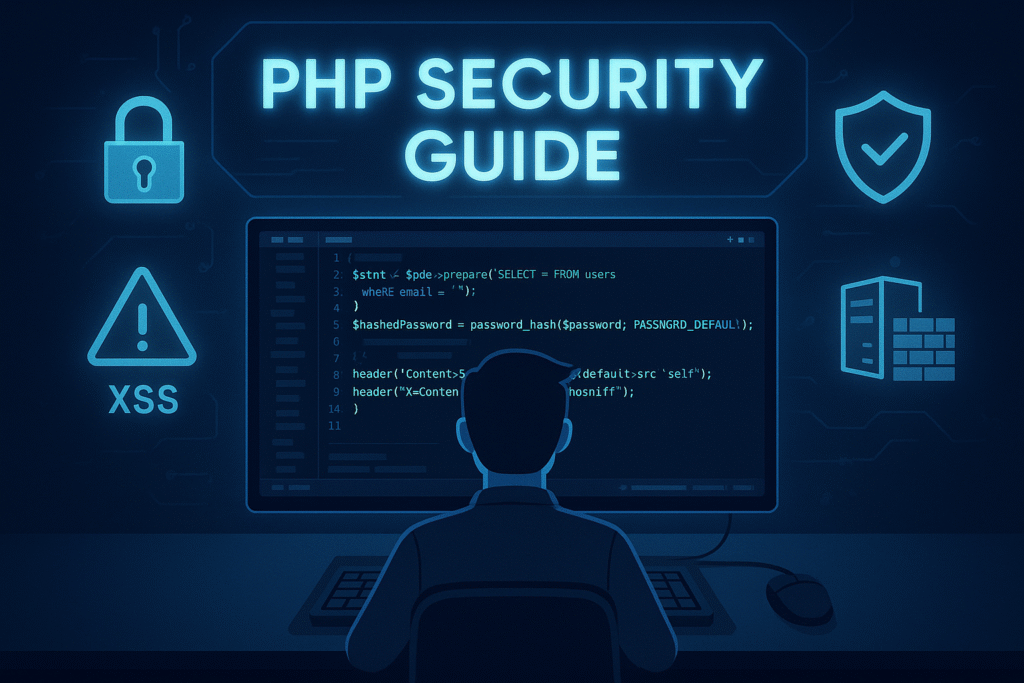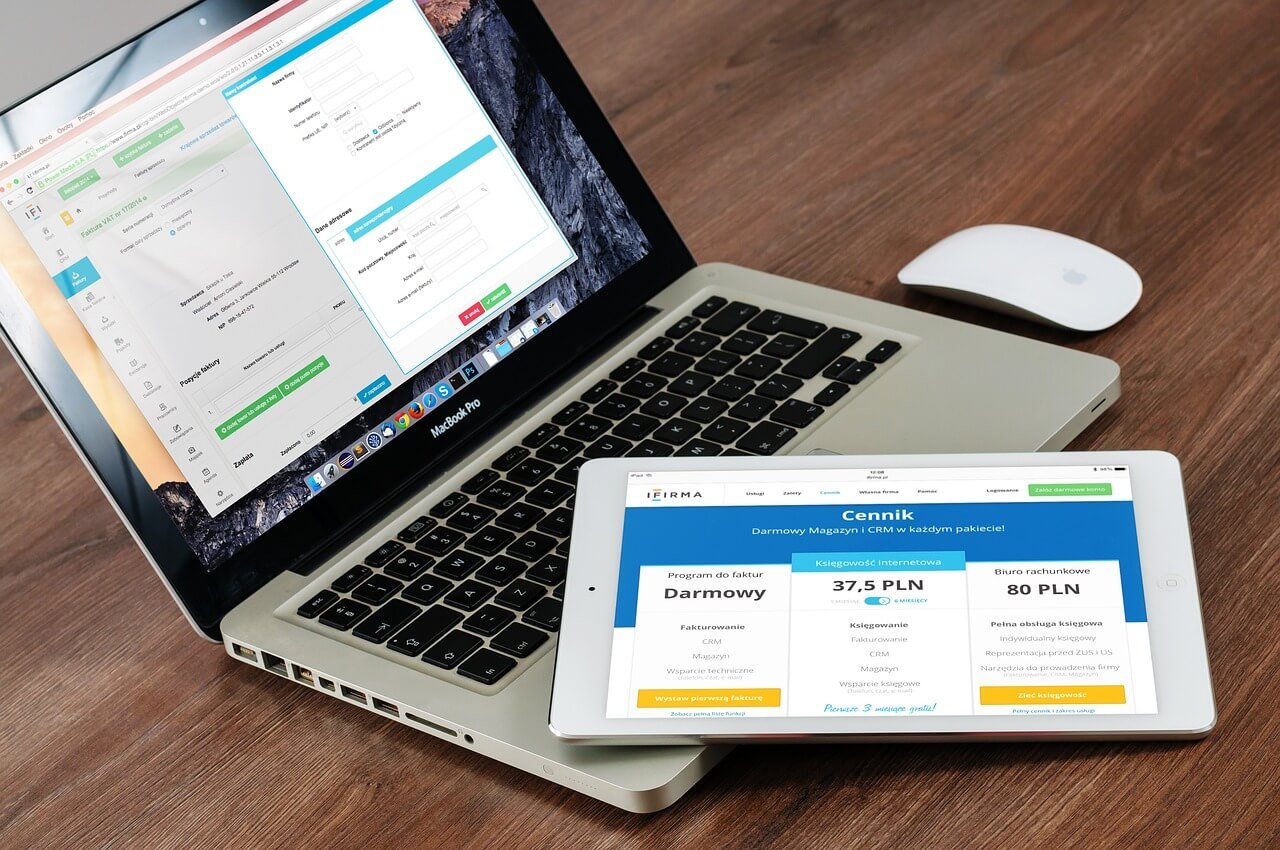1. Introduction to PHP Fundamentals
First and foremost, keeping your website safe is vital. In fact, PHP security helps stop many types of attacks. Additionally, this guide covers key steps to guard your site. By following these tips, you can therefore make your website significantly safer. Learn more about PHP Security Best Practices.

2. Common PHP Security Risks and Solutions
a) PHP Security: Stopping SQL Injection
Without a doubt, SQL Injection is a major threat. As a result, attackers can break into your databases. Furthermore, they might steal data or change your records. Therefore, you need strong measures to stop this.
Unsafe code example:
$username = $_GET[‘username’];
$password = $_GET[‘password’];
$query = “SELECT * FROM users WHERE username = ‘$username’ AND password = ‘$password'”;
Better security approach: Most importantly, always use prepared statements. Consequently, they keep your database safe.
$stmt = $pdo->prepare(“SELECT * FROM users WHERE username = :username AND password = :password”);
$stmt->execute([‘username’ => $username, ‘password’ => $password]);
Check OWASP’s Guide to SQL Injection Prevention
b) PHP Security: Preventing Cross-Site Scripting (XSS)
Similarly, Cross-Site Scripting is a common threat. In this case, attackers add bad scripts to websites. Consequently, this lets them steal data or take over accounts. Thus, you need good shields against XSS.
Ways to improve protection against XSS:
- First of all, use
htmlspecialchars()to clean inputs. - Next, set up a Content Security Policy.
- Finally, use frameworks with built-in safety tools. Read Google’s Guide on XSS Prevention
c) PHP Security: Preventing CSRF Attacks
Meanwhile, CSRF attacks harm web apps. Specifically, attackers trick users into making bad requests. As a result, they might change settings or steal money. Hence, you need strong guards for this.
CSRF protection steps:
- Initially, add CSRF tokens to forms.
- Additionally, use the SameSite cookie setting.
- Lastly, check HTTP referrers for better safety.
d) PHP Security: Stopping Remote Code Execution (RCE)
Moreover, RCE is a key risk to servers. In such cases, hackers can run bad code on your server. As a consequence, this can harm your whole system. Therefore, take steps to stay safe.
Steps to prevent RCE attacks:
- First of all, turn off risky functions like
eval(). - In addition, clean all user inputs.
- Finally, set strict file access rules.
e) File Upload Security Measures
Furthermore, file uploads bring risks. Specifically, attackers may add harmful files to your site. Thus, you need extra safety steps.
Best ways for safe file uploads:
- Above all, limit file types.
- Additionally, store files outside the web root.
- Also, scan files for harmful code.
- Ultimately, never trust file names from users.
3. PHP Security Best Practices
a) Database Security Implementation
In general, always use prepared statements. As a result, they make your queries safer. Consequently, your data stays better guarded.
b) Input Validation for PHP Security’s
Similarly, check all user inputs. Afterwards, clean inputs before you use them. Therefore, this helps keep strong.
c) Using HTTPS for Enhanced Protection
Meanwhile, HTTPS encrypts data between users and servers. As a result, it stops others from seeing your data. For this reason, use an SSL cert for best results.
d) Secure Session Management
- First, use secure cookies.
- Then, make new session IDs often.
- Additionally, set time limits on sessions.
- Finally, check user sessions for key actions.
e) File Permission Controls
- To begin with, set proper file access with
chmod(). - Furthermore, limit write access to key folders.
- Moreover, use different user accounts for tasks.
- Lastly, check file access rules often.
4. PHP Security Authentication Techniques
a) Password Security in PHP
For passwords, specifically use PHP’s password_hash() function:
$hashedPassword = password_hash($password, PASSWORD_BCRYPT);
Afterwards, check passwords with password_verify().
b) Two-Factor Authentication
Additionally, add 2FA to make your site safer. In particular, Google Auth helps guard accounts. Therefore, we suggest using it in your safety plan.
c) Role-Based Access Control
Similarly, set up role-based access rules. Moreover, use JWT or OAuth2 for logins. Subsequently, limit user rights. Finally, check access rights often.
5. PHP Security Headers Implementation
Furthermore, add HTTP headers to protect your site:
header(“Content-Security-Policy: default-src ‘self'”);
header(“X-Frame-Options: DENY”);
header(“X-XSS-Protection: 1; mode=block”);
As a result, these headers stop many attacks. Therefore, using them is key for your safety.
6. Keeping PHP Updated for Security
- Most importantly, update PHP often.
- In addition, use Composer for add-ons.
- Also, test updates before going live.
- Indeed, old software brings big risks.
7. Essential PHP Security’s Tools and Resources
For instance:
- Security Scanner finds weak spots.
- OWASP Top 10 lists key safety steps.
- PHPStan & SonarQube run safety checks.
- Together, these tools make a full PHP safety kit.
8. FAQs on PHP Security’s
How do I improve PHP security for my website?
- First, write safe code. Second, use HTTPS. Third, update your software. Finally, follow best safety steps.
What threats does this PHP Security guide cover?
- Specifically, this guide covers SQL Injection, XSS, CSRF, and RCE risks. Consequently, these steps help cut your risks.
How can I protect my databases?
- Above all, use prepared statements. Additionally, check all data inputs. Finally, set access rules the right way.
What are the best PHP security practices?
- In general, check inputs, use HTTPS, guard sessions, and follow OWASP guides. Indeed, these steps work better when used together.
How do I store passwords safely with PHP?
- Primarily, use
password_hash()for coding. Additionally, add two-factor auth. As a result, this keeps login details safe.
9. Final PHP Security Considerations
In conclusion, strong web safety stops cyber attacks. Specifically, this guide gives clear steps to make your site safer. Moreover, keep learning and updating your safety steps. Ultimately, taking action early beats fixing issues after an attack.
10. Take Action to Secure Your PHP Website Today!
Don’t wait until it’s too late! Strengthen your PHP security now by implementing these best practices. Contact us today for expert guidance and customized PHP security solutions to keep your website safe and secure.



